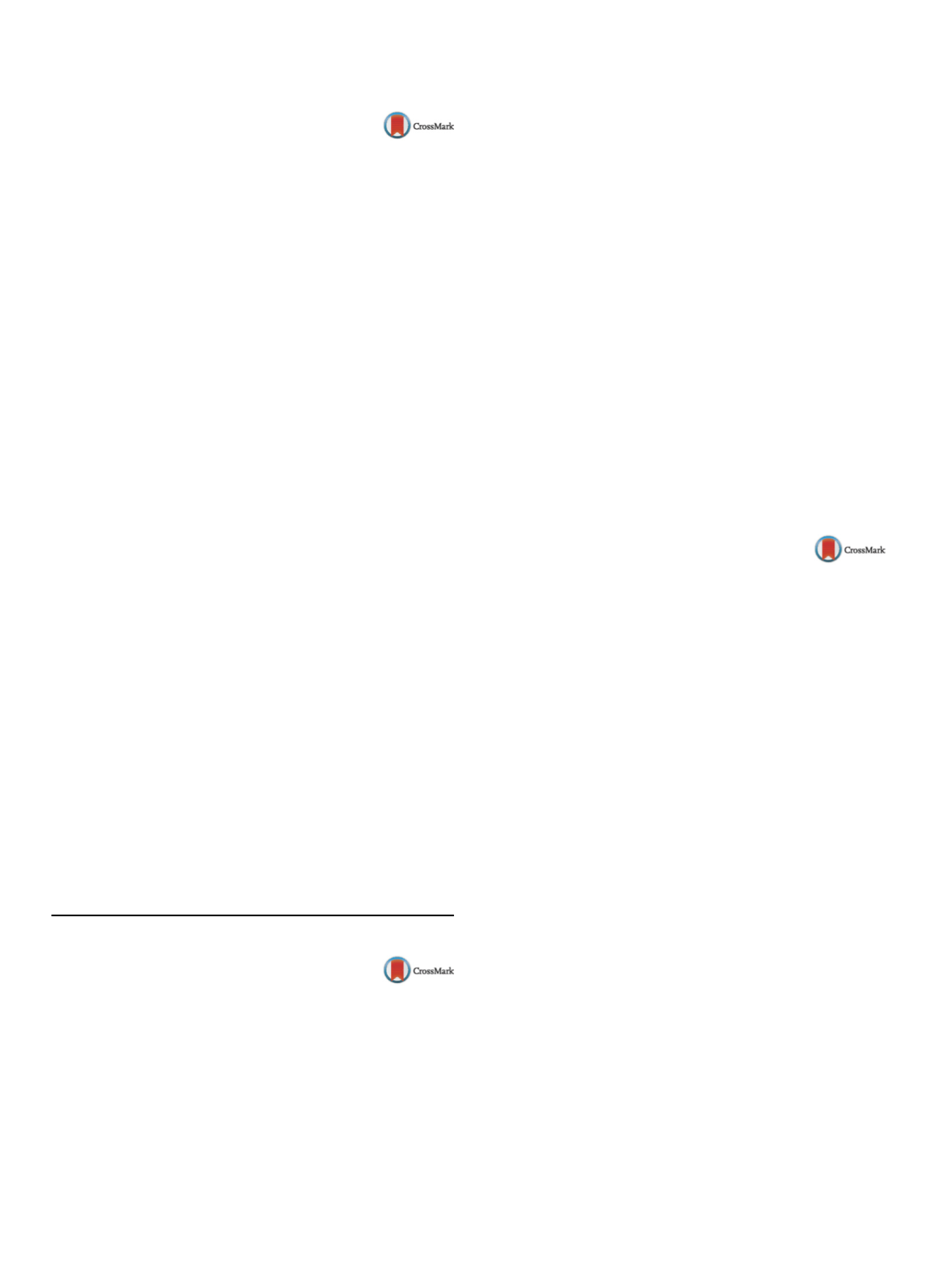

S10
25th European Congress of Psychiatry / European Psychiatry 41S (2017) S8–S52
S007
The impact of the change trial on
physical health in people with
schizophrenia
M. Nordentoft
1 ,∗
, H. Speyer
2, H.C.B. Norgaard
3, M. Birk
3,
O. Mors
31
Hellerup, Denmark
2
Mental Health Center Copenhagen, Research Department, Hellerup,
Denmark
3
Aarhus University Hospital, Research Department P, Aarhus,
Denmark
∗
Corresponding author.
Life expectancy in patients with schizophrenia is reduced by 20
years for men and 15 years for women compared to the general
population. About 60% of the excess mortality is due to physical
illnesses, with cardiovascular disease being dominant. The aim of
this trial was to improve the cardiovascular risk profile.
Methods
The CHANGE trial was an investigator-initiated, ran-
domised, parallel-group, superiority, multi-centre trial with
blinded outcome assessment. Patients diagnosed with schizophre-
nia spectrum disorders and increased waist circumference
according (>88 cm for women, >102 cm for men), were recruited
and centrally randomised 1:1:1 to 12-months of lifestyle coach-
ing plus care coordination versus care coordination alone versus
treatment as usual. The primary outcome was 10-year risk of car-
diovascular disease assessed post-treatment and standardised to
age 60, secondary outcomes included cardiorespiratory fitness and
physical activity. Clinical.Trials.gov NCT01585493.
Findings
A total of 428 participants were randomly assigned to
the CHANGE intervention (
n
= 138); care coordination (
n
= 142); or
treatment as usual (
n
= 148). At 12 months, the mean 10 years risk
of cardiovascular disease was 8.4% (SD 6.7) in the CHANGE group,
8.5% (SD 7.5) in the care coordination group and 8.0% (SD 6.5) in
the treatment as usual group (
P
= 0.41). We found no interven-
tion effects for any secondary or explorative outcomes, including
weight, cardiorespiratory fitness, physical activity, diet or smoking.
Interpretation
The CHANGE trial did not support individual
lifestyle coaching or care coordination as superior compared with
treatment as usual in reducing the cardiovascular risk in patients
with schizophrenia and increased waist circumference.
Disclosure of interest
The authors have not supplied their decla-
ration of competing interest.
http://dx.doi.org/10.1016/j.eurpsy.2017.01.081Symposium: From prediction errors to disorders
of compulsivity: A computational framework
S008
Elucidating the neural circuitry
underlying individual differences in
response to reward-associated cues
S. Flagel
USA
Stimuli in the environment that have been associated with reward
can gain control over behavior and, in some cases, lead to mal-
adaptive behavior. Reward cues acquire inordinate control when
they are attributed with incentive salience or transformed into
“motivational magnets” (i.e. incentive stimuli). Individuals vary
considerably in the extent to which they attribute incentive moti-
vational value to reward cues, and we can capture this individual
variation using an animal model. When rats are exposed to a
Pavlovian conditioning paradigm, in which the presentation of a
lever-cue is immediately followed by the delivery of a food reward,
some rats preferentially approach the lever (sign-trackers, STs)
while others approach the food cup (goal-trackers, GTs). Impor-
tantly, while the lever is a predictor for both STs and GTs, only for
STs does it become an incentive stimulus. Thus, this model allows
us to parse the neurobiological mechanisms underlying predictive
vs. incentive learning processes. Using this model, we have demon-
strated that dopamine is critical for incentive, but not predictive,
learning and that the cortico-thalamic-striatal “motive circuit” is
engaged only by incentive stimuli. In addition, we have identified
the paraventricular nucleus of the thalamus (PVT) as a central node
that differentially regulates sign- and goal-tracking behaviors. We
have begun to utilize a chemogenetic approach (i.e. DREADDs) in
combination with in vivo microdialysis to further elucidate the
neural circuitry underlying individual variation in cue-motivated
behaviors. Findings suggesting that STs rely primarily on subcor-
tical mechanisms, whereas GTs utilize more “top-down” cortical
processes will be presented and discussed.
Disclosure of interest
The author has not supplied his declaration
of competing interest.
http://dx.doi.org/10.1016/j.eurpsy.2017.01.082S009
A reinforcement-learning account of
Tourette syndrome
T. Maia
Faculdade de Medicina-Universidade de Lisboa, Instituto de Medicina
Molecular, Lisbon, Portugal
Background
Tourette syndrome (TS) has long been thought to
involve dopaminergic disturbances, given the effectiveness of
antipsychotics in diminishing tics. Molecular-imaging studies have,
by and large, confirmed that there are specific alterations in the
dopaminergic system in TS. In parallel, multiple lines of evidence
have implicated the motor cortico-basal ganglia-thalamo-cortical
(CBGTC) loop in TS. Finally, several studies demonstrate that
patients with TS exhibit exaggerated habit learning. This talk will
present a computational theory of TS that ties together these mul-
tiple findings.
Methods
The computational theory builds on computational
reinforcement-learning models, and more specifically on a recent
model of the role of the direct and indirect basal-ganglia pathways
in learning from positive and negative outcomes, respectively.
Results
A model defined by a small set of equations that charac-
terize the role of dopamine in modulating learning and excitability
in the direct and indirect pathways explains, in an integrated way:
(1) the role of dopamine in the development of tics; (2) the relation
between dopaminergic disturbances, involvement of the motor
CBGTC loop, and excessive habit learning in TS; (3) the mecha-
nismof action of antipsychotics in TS; and (4) the psychological and
neural mechanisms of action of habit-reversal training, the main
behavioral therapy for TS.
Conclusions
A simple computational model,
thoroughly
grounded on computational theory and basic-science findings
concerning dopamine and the basal ganglia, provides an inte-
grated, rigorous mathematical explanation for a broad range of
empirical findings in TS.
Disclosure of interest
The author has not supplied his declaration
of competing interest.
http://dx.doi.org/10.1016/j.eurpsy.2017.01.083

















